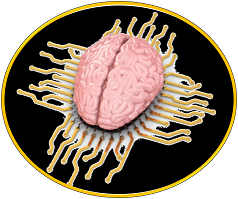 [Editor’s Note: Mad Scientist Laboratory is pleased to present our September edition of “The Queue” – a monthly post listing the most compelling articles, books, podcasts, videos, and/or movies that the U.S. Army’s Training and Doctrine Command (TRADOC) Mad Scientist Initiative has come across during the past month. In this anthology, we address how each of these works either informs or challenges our understanding of the Future Operational Environment. We hope that you will add “The Queue” to your essential reading, listening, or watching each month!]
[Editor’s Note: Mad Scientist Laboratory is pleased to present our September edition of “The Queue” – a monthly post listing the most compelling articles, books, podcasts, videos, and/or movies that the U.S. Army’s Training and Doctrine Command (TRADOC) Mad Scientist Initiative has come across during the past month. In this anthology, we address how each of these works either informs or challenges our understanding of the Future Operational Environment. We hope that you will add “The Queue” to your essential reading, listening, or watching each month!]
1. Can you tell a fake video from a real one? and How hard is it to make a believable deepfake? by Tim Leslie, Nathan Hoad, and Ben Spraggon, Australian Broadcast Corporation (ABC) News, 26 and 27 September 2018, respectively.
and
Deep Video Portraits by Hyeongwoo Kim, Pablo Garrido, Ayush Tewari, Weipeng Xu, Justus Thies, Matthias Nießner, Patrick Perez, Christian Richardt, Michael Zollhöfer, and Christian Theobalt, YouTube, 17 May 2018.
Mad Scientist has previously sounded the alarm regarding the advent and potential impact of “DeepFakes” – deceptive files created using artificial neural networks and graphics processors that yield nearly undetectably fake imagery and videos. When distributed via Social Media, these files have the potential to “go viral” — duping, deceiving, and manipulating whole populations of viewers.
ABC’s first news piece provides several video samples, enabling you to test your skills in trying to detect which of the videos provided are real or fake. ABC then goes on to warn that “We are careening toward an infocalypse,” where we may soon find ourselves in living in “A world without truth”.

In their second piece, ABC delves into the step-by-step mechanics of how DeepFakes are created, using former Australian PM Malcolm Turnbull as a use case, and posits placing this fabricated imagery into different, possibly compromising, scenes, manipulating reality for a credulous public.
The Deep Video Portraits YouTube video (snippets of which were used to illustrate both of the aforementioned ABC news pieces) was presented at the Generations SIGGRAPH conference, convened in Vancouver, BC, on 12-16 August 2018. In conjunction with the ABC articles, the combined narration and video in Deep Video Portraits provide a comprehensive primer on how photo realistic, yet completely synthetic (i.e., fictional) re-animations can be accomplished using source and target videos.
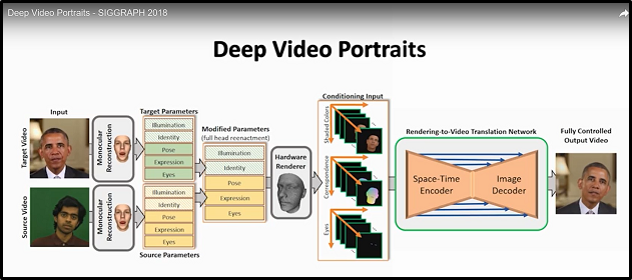
Christian Theobalt
When combined with the ubiquity of Social Media, these public domain AI algorithms (e.g., FakeApp, DerpFakes, DeepFakes) are democratizing an incredibly disruptive capability. The U.S. must develop and implement means (e.g., education) to “inoculate” its citizenry and mitigate this potentially devastating Gray Zone weapon.
“Attacking an adversary’s most important center of gravity — the spirit of its people — no longer requires massive bombing runs or reams of propaganda. All it takes is a smartphone and a few idle seconds. And anyone can do it.” — P.W. Singer and Emerson T. Brooking in LikeWar – The Weaponization of Social Media
2. “The first “social network” of brains lets three people transmit thoughts to each other’s heads,” by Emerging Technology from the arXiv, MIT Technology Review, 29 September 2018.
In 2015, scientists at University of Washington in Seattle connected two people via a brain to brain interface. The connected individuals were able to play a 20 questions game. Now these scientists have announced the first group brain to brain network. They call the network the “BrainNet” and the individuals were able to play a collaborative Tetris-like game.
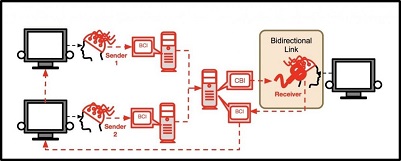
Direct Collaboration Between Brains / https://arxiv.org/pdf/1809.08632.pdf
To date, our future operational environment has described the exploding Internet of Things and even the emerging concept of an Internet of Battle Things. The common idea here is connecting things – sensors, weapons, and AI to a human in the or on the loop. The idea of adding the brain to this network opens incredible opportunities and vulnerabilities. We should start asking ourselves questions about this idea: 1) Could humans control connected sensors and weapons with thought alone, 2) Could this be a form of secure communications in the future, and 3) Could the brain be hacked and what vulnerabilities does this add? (Read Battle of the Brain) There are many more questions, but for now maybe we should broaden our ideas about connectivity to the Internet of Everything and Everyone.
3. “Scientists get funding to grow neural networks in petri dishes,” Lehigh University, 14 September 2018.
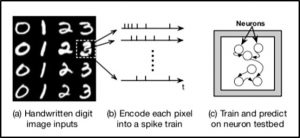
The future of computing may not necessarily be silicon or quantum-based — it may be biological! The National Science Foundation (NSF) recently awarded an interdisciplinary team of biologists and computer engineers $500,000. This is in support of Understanding the Brain and the BRAIN Initiative, a coordinated research effort that seeks to accelerate the development of new neurotechnologies. The intent is to help computer engineers develop new ways to think about the design of solid state machines, and may influence other brain-related research using optogenetics, a biological technique that uses light to control cells — “spike train stimuli” — similar to a two-dimensional bar code. The encoding of the spike train will then be optically applied to a group of networked in vitro neurons with optogenetic labels. This hybrid project could lead to a better understanding of how organic computers and brains function. This suggests a radically different vision of future computing where, potentially, everything from buildings to computers could be grown in much the same way that we “grow” plants or animals today.
4. “These “Robotic Skins” Turn Everyday Objects into Robots,” by Rachael Lallensack, Smithsonian.com, 19 September 2018, reviewed by Ms. Marie Murphy.
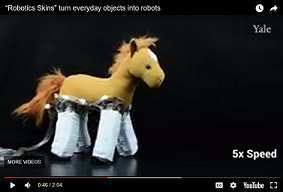
A team of roboticists out of Yale University published a report announcing the development of OmniSkins, pliable material with embedded sensors that can animate ordinary, inert objects. OmniSkins turn ordinary objects into robots on contact. These removable sheets can be reused and reconfigured for a variety of functions, from making foam tubes crawl like worms to creating a device which can grab and hold onto objects out of static foam arms. Initially developed for NASA, demonstrations reveal that OmniSkins can make a stuffed animal walk when wrapped around its legs and correct the posture of a person when embedded in their shirt. While these are fun examples, the realistic military applications are vast and varied. OmniSkins could represent a new development in performance-enhancing exoskeletons, enabling them to be lighter and more flexible. These sheets can turn ordinary objects into useful machines in a matter of minutes and can be modified with cameras or other sensors to fit the needs of the mission.
5. “Movement-enhancing exoskeletons may impair decision making,” by Jennifer Chu, MIT, 5 October 2018.

Researchers from MIT have discovered that the use of exoskeletons to enhance speed, power, and endurance could have a negative effect on attention, decision-making, and cognition. The researchers found that 7 out of 12 subjects actually performed worse on cognitive tasks while wearing an exoskeleton through an obstacle course. The researchers tested them on several cognitive tasks from responding to visual signals to following their squad leader at a defined distance. They concluded that more than half of the subjects wearing the exoskeleton showed a marked decline in reaction time to the various tests. This presents an interesting challenge for technology developers. Does a positive solution in one area negatively affect another, seemingly unrelated, area? Would the subjects in the test have performed better if they had prolonged training with the exoskeletons as opposed to a few days? If so, this presents an additional burden and training demand on Soldiers and the Army. Will a trade study involving not just physical measures, but cognitive ones now need to be integrated into all new Army technology developments and what does this do to the development timeline?
6. “Researchers Create “Spray On” 2-D Antennas,” by Michael Koziol, IEEE Spectrum, 21 September 2018.

Researchers from Drexel University have developed a novel solution to reducing the size and weight of traditional antennas. Using a metal like titanium or molybdenum, bonded with carbides or nitrides called MXene, they were able to produce a spray-on antenna solution. By dissolving the MXene in water, and using a commercial off-the-shelf spray gun, one can rapidly design, customize, and deploy a working antenna. The spray-on antenna is 100nm thick (versus a traditional copper antenna that is 3,000nm) and has a higher conductivity than carbon nanotubes – a previous solution to the small and thin antenna problem. On a hyperactive battlefield where Soldiers may need on-demand solutions in a compressed timeline, MXene spray-on antennas may be a potential game changer. How much time, materials, and processing can be saved in an operational environment if a Soldier can quickly produce a low profile antenna to a custom specification? What does this mean for logistics if repair parts for antennas no longer need to be shipped from outside the theater of operations?
7. “NASA’s Asteroid-Sampling Spacecraft Begins Its Science Work Today,” by Mike Wall, Space.com, 11 September 2018.

NASA’s OSIRIS-REx (short for Origins, Spectral Interpretation, Resource Identification, Security – Regolith Explorer) spacecraft commenced studying near-Earth asteroid Bennu’s dust plumes from afar on 11 September 2018. Once the probe achieves orbit around the ~500m-wide space rock on 31 December 2018, it will further explore that body’s dust, dirt, and gravel. Then, in mid-2020, OSIRIS-REx will swoop down to the surface to collect and return a sample of material to Earth in a special return capsule. While this piece represents very cool extraterrestrial science, it is also significant for what it bodes for the future Operational Environment, Multi-Dimensional Operations in the Space Domain, and our newly established Space Force.
“The $800 million OSIRIS-REx mission will … contribute to planetary-defense efforts. For example, the probe’s observations should help researchers better understand the forces that shape potentially dangerous asteroids’ paths through space… (Bennu itself is potentially hazardous; there’s a very small chance that it could hit Earth in the late 22nd century.)”
OSIRIS-REx is not the only probe sampling asteroids – Japan’s Hayabus2 spacecraft is preparing to touch down on the asteroid Ryugu this month. NASA has estimated the total value of resources locked in asteroids is equivalent to $100 Billion for every man, woman, and child on Earth.
This century’s new space race to capitalize on and exploit our solar system’s heretofore untapped mineral wealth, while defending critical space assets, will demand that the U.S. budgets for, develops, and maintains future space-based capabilities (initially unmanned, but eventually manned, as required by mission) to protect and defend our national and industrial space interests.
8. “Soldiers who obliterate enemy fighters with drones will be guided on the morality of their actions by specially trained army chaplains,” by Roy Tingle, Daily Mail Online, 25 September 2018.
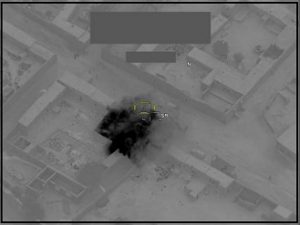
In possibly an all-time record for the worst news article title, it has been revealed that the British Army is training ethicists to teach soldiers about the morality of killing with drones. Chaplains will spend one year studying and obtaining a Master’s degree in Ethics at Cardiff University so that they can instruct officers on the moral dilemmas involved in killing an enemy from thousands of miles away. Officials have long been concerned about the emotional trauma suffered by drone pilots, as well as the risk that they will be more likely to use deadly force if the confrontation is being played out on a computer screen. This is about the speed of future combat and the decisive action that will be needed on the battlefield in the future. War will remain a human endeavor, but our Soldiers will be stressed to exercise judgement and fight at the ever increasing machine speed. The Army must be prepared to enter new ethical territory and make difficult decisions about the creation and employment of cutting edge technologies. While the Army holds itself to a high ethical standard, new converging technologies may come at an ethical cost. Updating guidance, policy, and law must keep up with what is employed on the battlefield. Many of these ethical dilemmas and questions lack definite answers and are ethical considerations that most of our future adversaries are unlikely to consider.
If you read, watch, or listen to something this month that you think has the potential to inform or challenge our understanding of the Future Operational Environment, please forward it (along with a brief description of why its potential ramifications are noteworthy to the greater Mad Scientist Community of Action) to our attention at: usarmy.jble.tradoc.mbx.army-mad-scientist@mail.mil — we may select it for inclusion in our next edition of “The Queue”!



